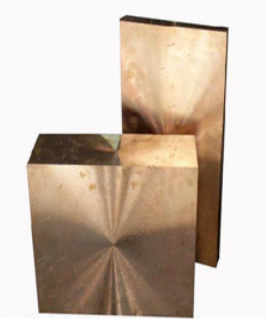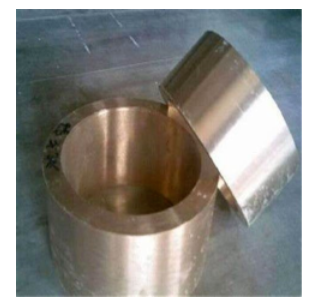
The bearing cage is an important part of the bearing, its main function is to maintain the uniform distribution of the rolling element, ensure the correct position of the rolling element, and reduce the friction and wear between the rolling element. The material of the cage has a significant impact on the performance of the bearing, including the following aspects:
1. Mechanical properties
The strength and toughness of cage material affect its impact resistance and vibration resistance. Stronger materials can better withstand stress at high speeds and heavy loads. The elastic modulus affects the deformation degree of cage under load, and too high deformation may lead to the change of bearing internal clearance and affect the stability of bearing operation.
2. Thermal stability
The stability of the cage under temperature changes has an important influence on the temperature adaptability of the whole bearing system. Some plastic materials (such as polyimide) have good heat resistance and are suitable for high temperature environments. The different coefficient of thermal expansion may lead to changes in the fit between the cage and the rolling element or the inner and outer rings at different temperatures, affecting the operation of the bearing.
3. Friction characteristics
The material and surface treatment of the cage affect the friction coefficient of its contact with the rolling element. Low friction coefficient can reduce rolling resistance and improve bearing efficiency. Certain materials (such as certain high-performance plastics or specially treated metals) can reduce lubricant consumption and extend the maintenance cycle of the bearing.
4. Weight
The weight of the cage affects the moment of inertia of the bearing, especially in high-speed applications, and lightweight cages (such as titanium alloys or certain high-performance plastics) can improve the dynamic performance of the bearing. In applications that need to save energy and reduce the overall energy consumption of the machine, the use of lightweight cages can improve overall efficiency.
This paper mainly discusses the cage material selection for high-precision bearings, high-precision bearings are a class of special bearings to meet the needs of precision machine tools and other precision equipment, including high-precision angular contact ball bearings, cylindrical roller bearings, one-way and two-way thrust angular contact ball bearings, deep groove ball bearings, etc. It has the characteristics of high speed, high precision, high stiffness, low temperature rise, low vibration and low noise. In order to ensure the above characteristics of high-precision bearings, there are special requirements for the performance of cage materials, such as vibration absorption, heat resistance and wear resistance.
Cage material selection is determined based on speed, noise, vibration, lubrication and working environment. High precision bearings commonly used cage materials are polyamide, polytetrafluoroethylene, polyimide, polyphenylene sulfide, polyether ether ketone, phenolic laminate, bronze and brass, through the solution of its characteristics (including the use of restrictions and limit temperature) can be selected for different types and working conditions of the bearing cage material more suitable.
This paper mainly introduces the characteristics of cages made of copper alloy materials. Commonly used copper alloys are divided into bronze and brass, of which bronze is an alloy of pure copper (copper) added to tin or lead. Compared to pure copper, bronze has a high strength and a low melting point (25% tin smelting bronze, the melting point will be reduced to 800 ° C, while pure copper melting point is 1083 ° C). Bronze castability is good, wear resistance and chemical stability, with corrosion resistance, high hardness, bright color and other characteristics, but the bronze cage will abnormally expand when it is cold. Brass is an alloy of copper and zinc. The higher the content of zinc in copper, the higher the strength and the lower the plasticity. The zinc content of brass used in industry does not exceed 45%, which will cause brittleness and deteriorate the properties of the alloy. Bronze and brass are described below.
The commonly used bronze cage materials are aluminum bronze, beryllium bronze, silicon bronze, etc.

Beryllium bronze
(1) Aluminum bronze. Qall0-4-4 aluminum bronze has stable mechanical properties below 400℃, has good anti-friction, good corrosion resistance in the atmosphere, fresh water and sea water, can be hot processed and welded, but not easy to braze.
(2) Beryllium bronze. Beryllium bronze is a potassium (Be)≤ 2.5% copper beryllium binary alloy, in addition to high strength, elasticity, hardness, wear resistance, fatigue resistance and non-magnetic properties, as well as excellent electrical conductivity, thermal conductivity and corrosion resistance, impact does not produce sparks, and has excellent process performance.
(3) Silicon bronze. Silicon bronze is a type of bronze with silicon as the main alloying element. In addition to silicon, the silicon bronze used in industry also contains small amounts of manganese, nickel, zinc or other elements. Silicon is a limited solid solution in copper, the maximum solubility can reach 5.3% at 852 ° C, and decreases with the temperature, but the age-hardening effect is not strong, generally not enhanced heat treatment. Qsi3-1 silicon bronze can be processed under cold and hot pressure, good mechanics, corrosion resistance, wear resistance and welding performance, no magnetic, no spark during impact. Qsi3.5-3-1.5 silicon bronze is a silicon bronze containing zinc, manganese, iron and other elements, the performance is the same as QSI3-1, but the heat resistance is better, and the bar and wire are less prone to cracking when stored.
The commonly used brass cage materials are tin brass, lead brass, nickel brass, manganese brass, etc.

Manganese brass
(1) Tin brass. Adding 1% tin to brass can significantly improve the resistance of brass to seawater and Marine atmosphere corrosion, so it is called "navy brass". Tin can improve the machinability of brass.
(2) Lead brass. Lead brass is commonly referred to as easy to cut national standard copper. The main purpose of adding lead is to improve the machinability and wear resistance, and lead has little effect on the strength of brass. Carving copper is also a kind of lead brass. Most brasses have good color, processability, ductility, and are easy to electroplate or paint.
(3) Nickel brass. The addition of nickel to brass can significantly improve the corrosion resistance of brass in atmosphere and seawater. Nickel can also increase the recrystallization temperature of brass, prompting the formation of finer grains.
(4) manganese brass. The addition of 1% to 4% manganese in brass can significantly improve the strength and corrosion resistance of the alloy, without reducing its plasticity, and the pressure processing performance under cold and hot states is quite good.
The selection of the appropriate cage material needs to consider the working conditions of the bearing, load, speed, temperature, lubrication state and cost. The correct material selection can significantly improve the performance and life of the bearing.